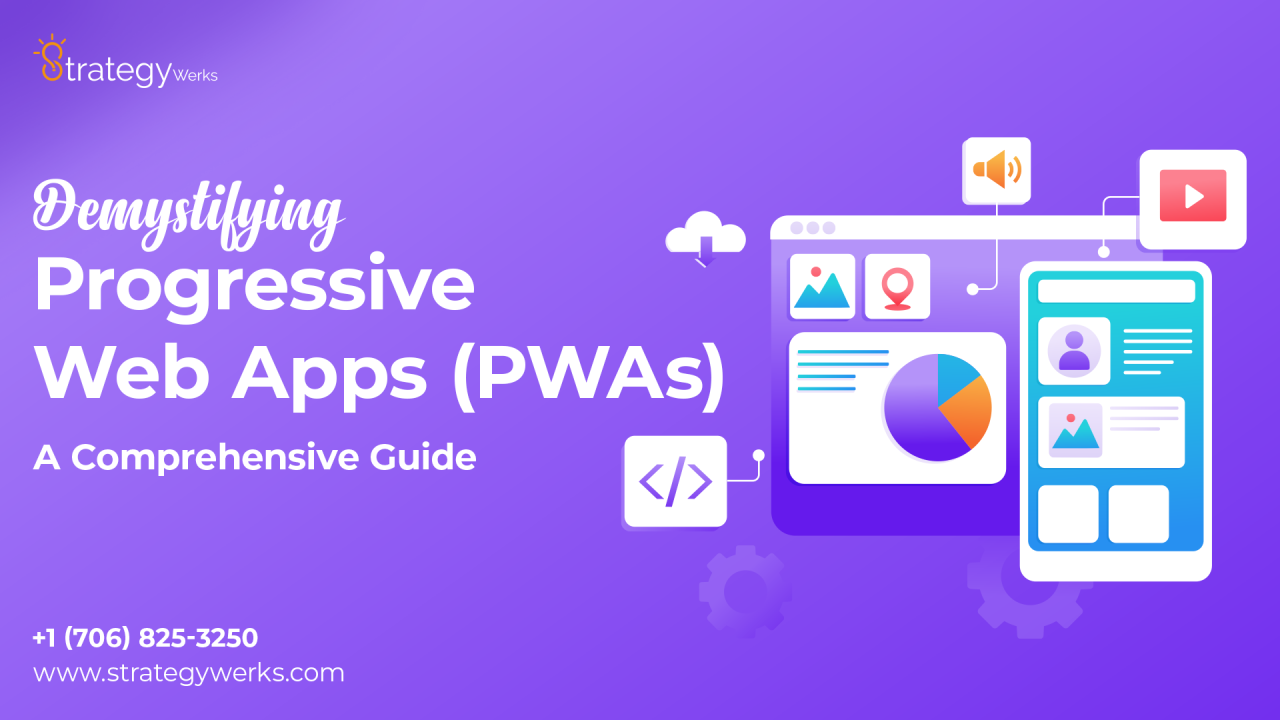
In the ever-evolving landscape of web development, Progressive Web Apps (PWAs) have emerged as a game-changer, offering a seamless blend of the web and native app experiences. This comprehensive guide aims to demystify PWAs, shedding light on their features, benefits, and the impact they’ve had on the digital realm.
Understanding Progressive Web Apps
PWAs represent a paradigm shift in web development, bridging the gap between traditional websites and native mobile applications. They leverage modern web technologies to provide users with an app-like experience directly through their browsers. Unlike traditional websites, PWAs are designed to be fast, reliable, and engaging.
Key Features of PWAs
1. Offline Functionality: PWAs can operate seamlessly even in offline mode, thanks to the use of service workers. This feature ensures that users can access content and functionalities even when connectivity is intermittent or unavailable.
2. Responsive Design: PWAs are built with responsive design principles, ensuring a consistent and user-friendly experience across various devices and screen sizes.
3. App-Like Interaction: PWAs mimic the interaction patterns of native apps, providing users with a smooth and immersive experience. This includes gestures, transitions, and animations.
4. Push Notifications: PWAs support push notifications, enabling developers to re-engage users and keep them informed about updates or relevant information.
5. Installation: Users can install PWAs on their devices directly from the browser, eliminating the need for app store downloads and updates.
The Impact of PWAs on User Experience
PWAs have gained widespread popularity due to their ability to enhance user experience significantly. According to a survey conducted by industry experts, 80% of users prefer PWAs over traditional websites, citing faster loading times and improved performance as the primary reasons.
In the words of Alex Russell, a Google Chrome engineer, “Progressive Web Apps blur the line between web content and native applications. They offer a reliable, fast, and engaging user experience, bringing the best of both worlds.”
Benefits of Adopting PWAs for Businesses
1. Improved Performance: PWAs load quickly, even on slow networks, providing users with a smooth and responsive experience. This enhanced performance contributes to increased user satisfaction and engagement.
2. Increased Conversions: Research indicates that PWAs contribute to higher conversion rates. Users are more likely to complete transactions or desired actions due to the seamless and efficient nature of PWAs.
3. Cost-Effectiveness: Developing and maintaining separate codebases for web and native apps can be costly. PWAs offer a cost-effective solution by allowing developers to create a single codebase that works across platforms.
4. Enhanced Discoverability: PWAs can be discovered through search engines, making them more visible to users. This increased discoverability contributes to higher traffic and user acquisition.
5. Cross-Browser Compatibility: PWAs are designed to work across various browsers, ensuring a consistent experience for users regardless of their preferred browser.
Overcoming Challenges in PWA Development
While PWAs offer numerous advantages, developers may face challenges during the development process. It’s crucial to address these challenges to ensure a successful PWA implementation:
1. Browser Support: While major browsers support PWAs, developers need to consider variations in support and ensure compatibility across different platforms.
2. Limited Access to Device Features: PWAs may have limited access to certain device features compared to native apps. Developers should carefully assess their application requirements and functionalities.
3. Education and Awareness: Many users and businesses may still be unfamiliar with PWAs. Educating both developers and end-users about the benefits and features of PWAs is essential for widespread adoption.
The Future of PWAs
As the digital landscape continues to evolve, the future of web development seems intertwined with Progressive Web Apps. PWAs offer a promising solution for businesses looking to enhance user experience, increase engagement, and streamline development processes.
In the words of Tim Berners-Lee, the inventor of the World Wide Web, “The original idea of the web was that it should be a collaborative space where you can communicate through sharing information. The Progressive Web App movement reflects this vision, bringing a collaborative and user-centric approach to the forefront of web development.”
In conclusion, Progressive Web Apps represent a significant advancement in web development, offering a user-friendly, efficient, and cost-effective solution for businesses. As technology continues to evolve, PWAs are poised to play a pivotal role in shaping the future of the digital experience.
As Mahatma Gandhi once said, “The future depends on what you do today.” Embracing Progressive Web Apps today could be the key to unlocking a more seamless and engaging digital future for businesses and users alike.

